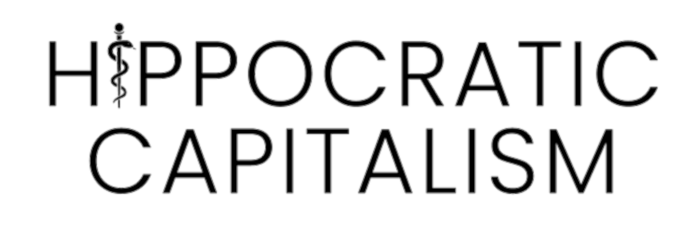Improving Patient Access to NIH-Developed Technologies

The National Institutes of Health (NIH), which at $45B/year is arguably the world’s premier funder of academic medical research, recently issued a request for public comment on a draft policy. Like all government policies, this one is pretty wonky. But it addresses an important issue, namely the affordability of medical technologies developed using public research funding. So please bear with me while I explain why I think the NIH’s proposal is doomed to fail, and what I believe would be a more successful approach.
To explain my reasoning, I first need to talk about “March-in rights.” These rights were part of the 1980 Bayh-Dole Act that set up the patenting and licensing rules for government-funded research. Essentially, when a private company licenses a technology that was developed and patented by government scientists, the government can later “march in,” i.e. offer that same patent to other companies, if the original company doesn’t do a proper job of developing a useful product (drug or device) and make it available at an affordable price. “Affordable” being the operative word these days. Last December, for example, the Biden administration declared their intent to use this mechanism to force drug companies to make certain drugs more affordable.
The exercise of march-in rights is, however, extremely controversial. Breaking a patent licensing contract with a biotech company, esp. when a highly profitable product is involved, is essentially a nuclear option. Any such action would set a precedent with enormous political implications, analogous to a country nationalising a company or industry. And the NIH, just like the CDC and the FDA, cannot afford to become politicised like that. Which is why, over the more than 4 decades since Bayh-Dole was passed, march-in rights have not been exercised even a single time. And I doubt they ever will be.
Understanding this, thoughtful NIH leaders have been looking for alternative ways to increase patient access (again, this is mainly about affordability) to medical technologies patented by its in-house scientists. The proposed policy would require any future licensee (pharmaceutical or device company) to publish an “access plan” as soon as a product enters a phase-3 clinical trial or equivalent stage of development. The plan would be made public, and NIH would have the right to make comments and recommendations back to the company.
It’s hard for me to see how this is going to do anything useful. One hypothesis is that perhaps someone at NIH thinks that access plans could be used by journalists and activists to shame companies when they don’t follow their plans. But it’s more likely that the companies would employ vague language to prevent it being used against them, more or less the same as companies currently do with their annual sustainability reports.
Here’s the deeper problem: Unless NIH intends to use march-in rights as leverage, which for the reasons above I don’t think will ever happen, NIH’s leverage to influence a company’s behavior ends at the moment the patent license is signed. After that point, the company can and will do whatever they see as being in the best interest of their shareholders, and access plans would simply be an additional compliance task. In other words, toothless and pointless. The cynical part of me wonders if someone at NIH (or the Biden administration?) has a political goal for this policy, essentially so they can say to the public that at least they’re trying to improve drug affordability. I hope I’m wrong on this last point.
Does NIH have any better options? Absolutely.
Step one is recognising that the current licensing process is part of the problem, and tacking on access plans to a flawed process isn’t going to fix it. The current license negotiation process, from what I can see, is designed around maximising licensing revenue. (NIH’s request for comments highlights the $12B in total annual licensing revenue as evidence of the program’s success). NIH can either choose a goal of maximising revenue or a goal of maximising patient access. Trying to do both at the same time guarantees failure on at least one of the two goals.
Every time NIH makes a new patent available to be licensed, they should first clearly define what NIH's own impact goals are for that technology, and then come up with a corresponding wish list of contract terms. Now, this is a bit harder when you don’t know for certain what the end product might eventually look like. But it’s not impossible. Below is my own (naive) wish list, which NIH is welcome to use as a starting point:
- Contractual prohibitions on all of the usual IP misbehaviour that’s currently common in biopharma, including evergreening, patent thickets, etc.
- Prohibitions on kickbacks within distribution channels. This includes rebates, volume incentives, and anything other than a simple percentage markup for any middleman.
- Providing the product at manufacturing cost (or maybe a modest cost-plus) to low income countries.
- In some cases, such as when the technology happens to be specific to a particular disease or population, it might be possible to devise some form of price cap.
- Where possible, licenses should be nonexclusive. Usually, an exclusive license (i.e. time-limited monopoly) is necessary in order for a company to raise the capital to develop a technology, get it through clinical trials, etc. But for technologies that don’t require as much capital to develop into commercial products, non-exclusive licensing is an obvious way to increase impact.
Once it has a wishlist, NIH should license to the entity that comes the closest to the terms on the list, rather than the entity that offers the most money. It would certainly be reasonable to bundle in a large enough fee to cover NIH’s administrative costs of patenting and licensing activities, but anything beyond that should ideally flow back to patients in the form of reduced pricing, not back to the NIH. Now, negotiating these types of terms in a way that gets the best possible deal for the American public would require considerable senior-level judgment. But it’s doable. More importantly, it’s the only realistic way in which the NIH can use the patent process to accomplish its stated goal of maximising access to NIH-invented technologies.
Put another way: NIH’s public mission is about benefit to patients, not profits for itself. Its patent licensing processes should be designed around that same mission.
